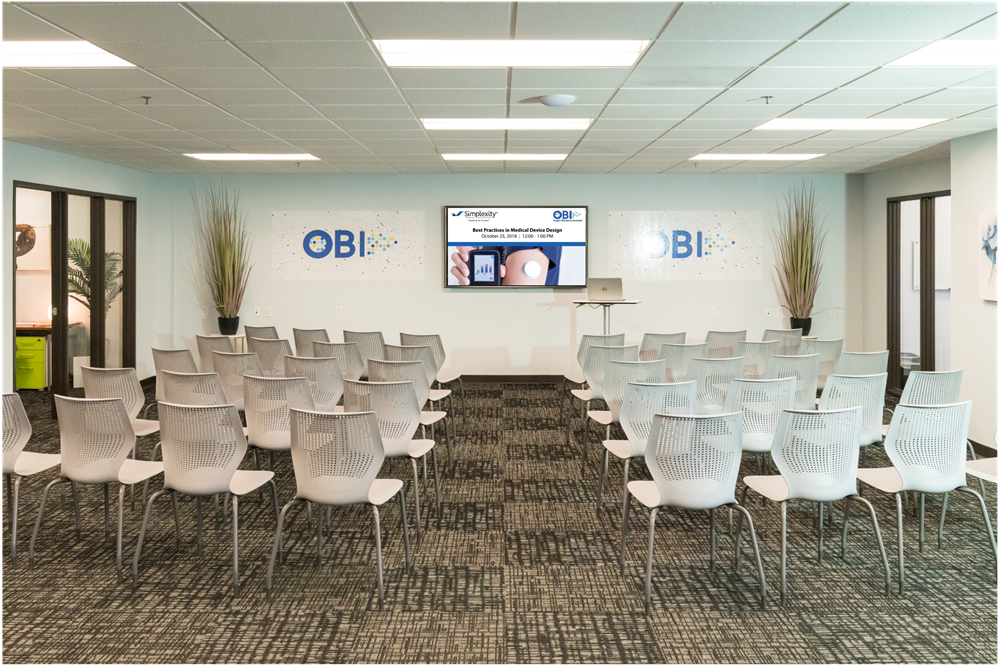So, you’ve found a niche in the ever-growing world of biotech! You’ve past the initial hurdle of closing the first round of funding and now you’re on the hook to deliver results. What’s the next step? Finding a team that can execute quickly to deliver quality results.
This is when companies often turn to external engineering, design service, or other kinds of development partners for help. The ability to quickly ramp an experienced team is one reason such partners have been so effective for many startups. It takes work to find the right partner and to create a relationship that will lead you to success. Here are a few tips from Simplexity that will help with the process.
Understand your regulatory path
If your product will require FDA approval, the regulatory path you choose has a significant influence on what activities you’ll be doing during development. What level of risk analysis is needed? Will you be performing animal or human studies?
You should get input from your development partners on these, but at the end of the day you will be working with the FDA on your submission. This is where a regulatory expert is helpful to have on-staff, in addition to your design partners.
Describing your product as a Class 2 device and planning for a 510k submission only tells a part of the story. Familiarizing yourself with the regulatory requirements for your specific product will allow you to more fully contribute to creating an appropriate product development plan.
Decide what technology you will keep in-house
If you’re developing a novel medical device and have reached the point of receiving funding, you’ve likely spent quite a bit of effort getting there. Undoubtedly there are aspects of your device that your team are now experts on for which you don’t need a design partner. Choosing partners that best augment your team with expertise in the areas where your internal team has more limited capability is a common approach to design partnerships.
Even in cases where your development partners will take on the bulk of the design, always maintain a close advisory role with frequent touchpoints in the areas that you know best. Your development partner will appreciate this and you’ll avoid costly learning curve issues.
Hold design reviews early and often
It is rare, if not impossible for a design review to result in “everything looks perfect, no changes need.” Plan for formal design reviews at phase gates and when releasing parts for fabrication. Even the brightest engineer can get lost in the details of their design and miss things. Participate in design reviews with your development partner. The collection of knowledge and viewpoints is critical to an effective review and often results in finding mistakes and opportunities for simplification before parts are fabricated.
Get feedback from actual users throughout the process
Unlike many consumer devices, engineers typically don’t have experience using medical devices and are not familiar with consideration and constraints of the end user. Get feedback early and throughout the development process from different user groups. Observe users evaluating your prototypes and providing feedback. Show them options and ask questions.
One common approach is to have a network of surgeons, doctors, nurses, and other medical experts on staff or part of your advisory board. Utilize their input every chance you can. Simple things like the color of the LEDs or the size and placement of a button on the device may not seem critical to you but may have a big impact on the way a nurse uses the device during a procedure. You will be surprised how much you can learn by getting hardware in medical professionals’ or end users’ hands and seeing how they use (or misuse) it.
Create a development plan and follow it
It’s easy to fall into the trap of jumping to solutions and trivializing the development steps with the goal of getting things done quickly. In less regulated consumer devices, it is common practice to skip things like documenting requirements. Fast-tracking or skipping these early activities can cause major speed bumps later in development.
Some believe that the fastest way to the finish line is to quickly build something and see what works and what doesn’t, then iterate a few times until the product is “good enough”. That approach can lead to costly and time consuming “churn,” and your medical device often doesn’t end up the way you envisioned. Instead, adopt a systematic approach, starting with a realistic project plan that identifies milestones and phase gates.
Product development is not an exact science and unexpected challenges and problems will arise. This is why setting the groundwork upfront greatly is so important. Also, your design history file and FDA submission package will have a greater chance of success.
Treat your development partner like a partner
Just because you selected and hired “someone else” to develop your product does not mean they are not a part of your team. Everyone shares your goal of developing a high quality and successful product and establishing a strong and trusting relationship across the team is essential to achieving this goal.
Become familiar with one another by holding face-to-face meetings, design reviews, and brainstorm sessions that will help prevent unwanted surprises along the way. The best partnerships between medical device firms and engineering development partners last for years, where one feels like an extension of the other. Everyone benefits from creating lasting, trusting partnerships, especially the end users since this most often results in simpler and better products.

